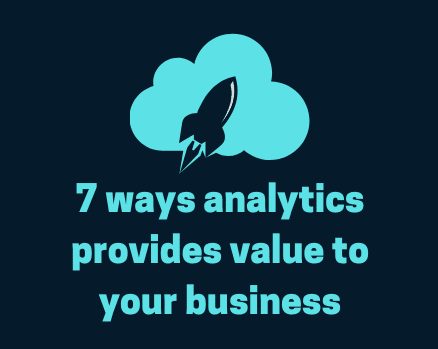Perhaps you’ve heard the term “KPI” and have wondered what it means. A KPI, or Key Performance Indicator, is a critical outcome-based indicator that measures or tracks progress in order to meet a goal or objective. A single KPI is made up of the following attributes defined using the SMART criteria. We will go one step further and use the expanded SMARTER criteria:
- Specific – Is the objective or goal Specific enough?
- Measure – Can you Measure progress towards that goal or objective?
- Attainable – Is the goal or objective realistically Attainable?
- Relevant – Is the goal or objective Relevant to the business?
- Time-Frame – What is the Time-frame for achieving the goal or objective?
- Evaluate – After you Evaluate the goal or objective for changes, is the KPI still relevant?
- Revise – Does the evaluation leads to a need to Revise the KPI?
As we push into 2020, it may be time for you to look at your business goals to determine what KPIs your business needs. Your team will need to look across your organization to determine KPIs for sales, financial services, operations & marketing, and consumers & customers. Starting points in these verticals of your business might include:
- Number of Qualified Leads
- Average Time to Conversion
- Gross Profit Margin
- Revenue Growth
- Employee Satisfaction Rating
- Number of Contacts Through Outreach Solutions
- Number of Returning Customers
It is important to remember that an effective KPI isn’t always an industry-led Indicator. Careful evaluation of your goals is needed to determine how you can measure the success of each one. It is best to start with a basic goal and determine the success marker for that goal. Next, you should plan how you will measure that success. Finally, you should identify how you’ll feed the necessary information into the KPI.
Create Your First KPI
Identifying and planning for your KPI may sound like the hardest part, but it is simply an exercise of thought. The reality is that the development and execution of a KPI is usually the hardest aspect of KPI implementation. Developing a solid KPI starts with a careful study of the business goal. From there, you should determine if any customizations are needed to achieve that goal.
To start, you need a clear objective. For example, the company wants to know how many customers are converting from a one-time consumer to a returning consumer. They also want to know how many of those returning conversions have opted for the Premium over Standard offering. This type of KPI is known as a CRR, or Customer Retention Rate. It is a key measurement of sustained growth in the subscription world. Simply put, we want to determine how many customers renewed and if those customers upgraded to Premium. The goal of the CEO is to have a 45% renewal score with 15% opting for the Premium subscription.
Once you have a clear idea of the objective, you need to ensure it follows the SMARTER criteria defined above. Does it meet each of the criteria?
- Specific: How many customers return after their first year, and did they renew at the Standard or Premium level?
- Measurable: We have a number of total customers at the beginning of the defined period defined as X. The number of customers who subscribe during the defined period will be Y. At the end of this period, the number of customers who renewed will be measured as Z. The formula for CCR is ((C – B) / A) * 100.
- Achievable: Is it possible for the company to renew its customers at a rate of 45%? Can the business upsell 15% of those renewals to the Premium level?
- Relevant: CRR is a core model for subscription-based businesses, making this model relevant to the growth of the business.
- Time-Frame: Did the CEO define the time-frame he would like to achieve the goal? Subscription-based companies should know that a 45% renewal rate over 6-12 months is highly ambitious. You should adjust for a longer period to get a more accurate measurement.
- Evaluate: During the defined period of time, the business will monitor the KPI and evaluate every 90 days. If it is still relevant to the current subscription model.
- Revise: If the subscription model changes, or if the goal is defined as being over or under, the KPI will be revised.
Final Thoughts
Many businesses realize that KPIs are critical indicators of progress. It is defining and developing KPIs that are not always thought out or executed well. I want to leave you with a final list of KPIs that are broadly relevant to most businesses:
- Profit – Every business considers profit to be the most important goal year over year. Analyzing both growth and margin will help you better understand if your business is successful.
- Cost – Every business incurs cost…it is simply the necessary evil of running a business. However, the cost doesn’t have to translate into hemorrhaging money. Effectively measuring cost can help you manage and reduce the impact on your business.
- Regional Sales – By analyzing how regions are performing you can better serve the high-performing regions to keep them happy. Additionally, you will also be able to increase focus on underperforming regions.
- Net Promoter Score (NPS) – NPS is an industry standard used to measure long-term business growth. For instance, Marketing may use more than one method to survey your customers and determine the likelihood of recommending your business. Finally, you should determine your baseline and build a KPI to measure the NPS.
- Employee Satisfaction – Let’s face it…the happier an employee is the harder they work. Understanding and measuring your Employee Success iss crucial to the health and success of your business.
If you find KPIs are overwhelming or are looking for an expert, let QuadraByte help in your overall KPI strategy. Our team can design and develop KPIs critical to the success of your business. In the end, we will provide you with easy and powerful methods for reporting and calls to action.



